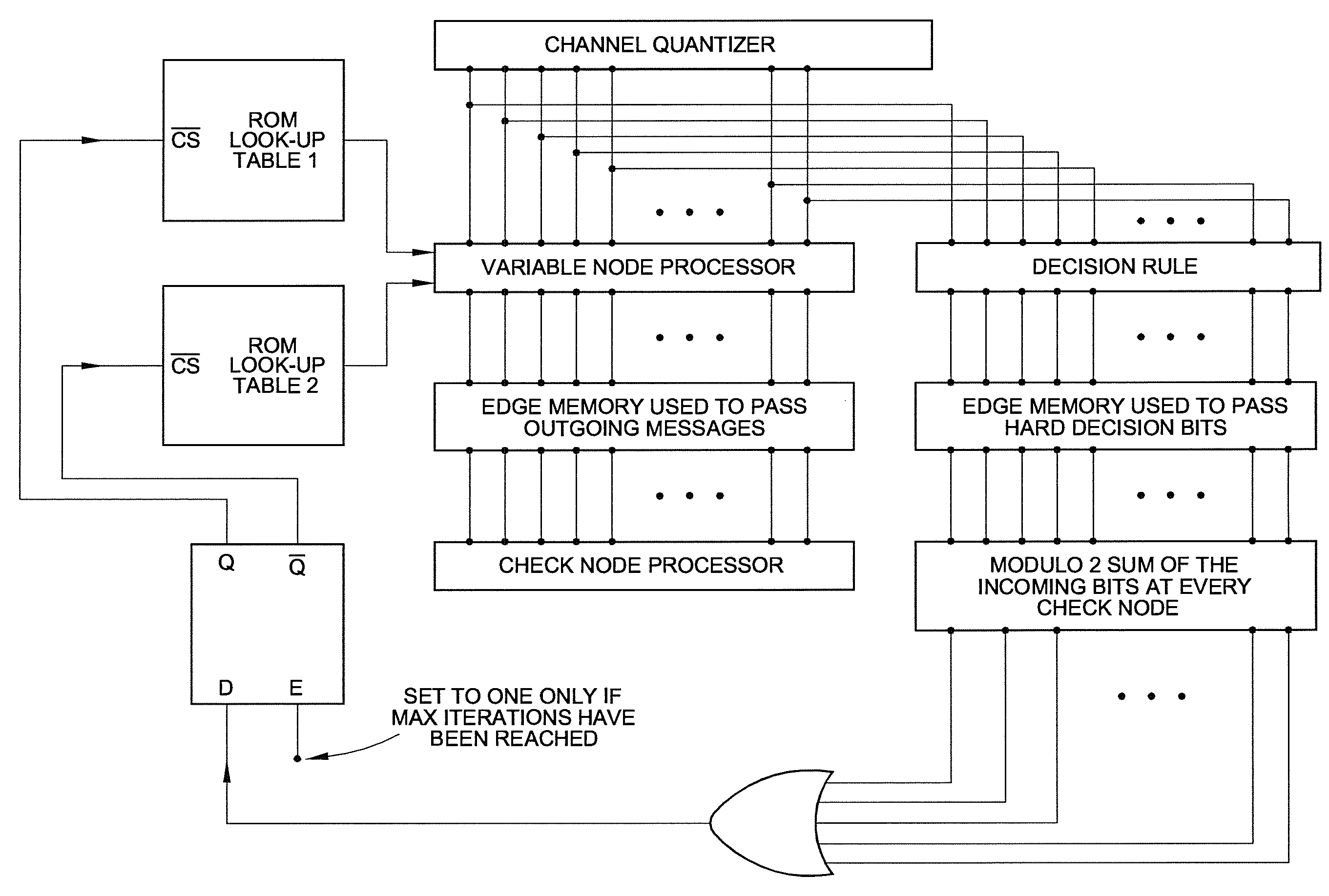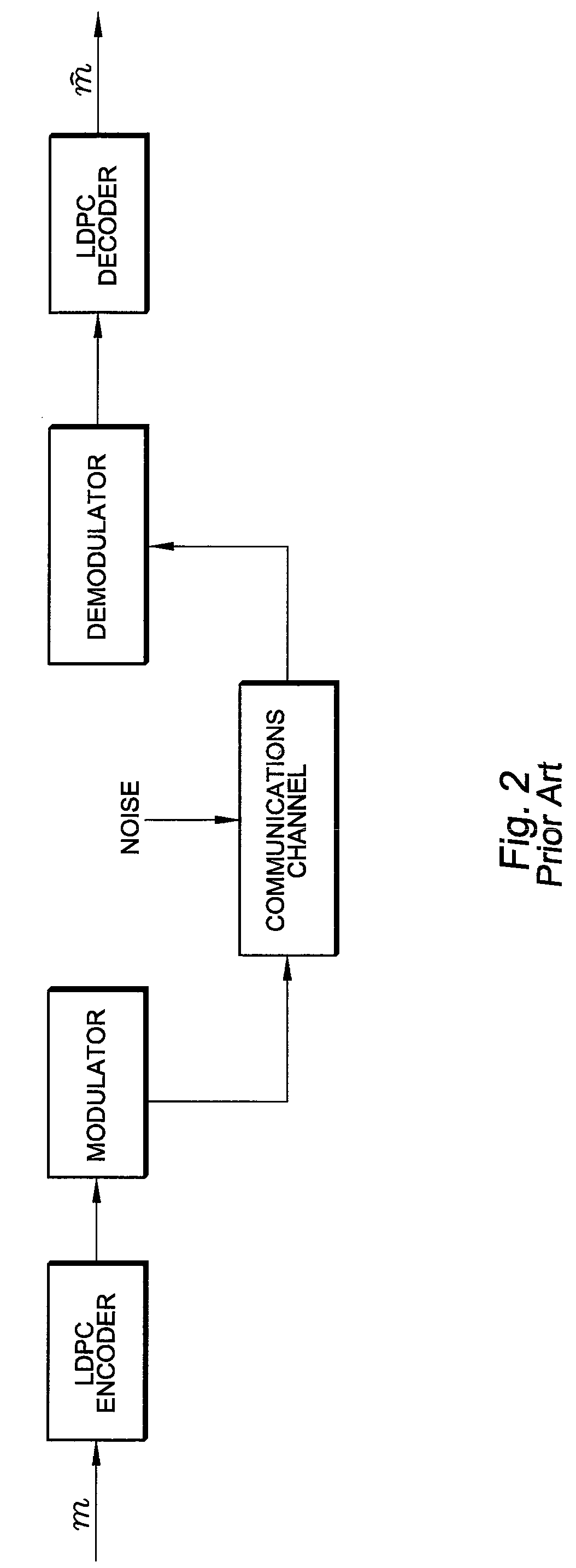Low complexity finite precision decoders and apparatus for LDPC codes
a low-complex, finite-precision technology, applied in the direction of forward error control, digital transmission, coding, etc., can solve the problem that the decoder has the potential to outperform the floating-point bp decoder, and achieve the effect of simplifying hardware implementation, reducing failure rate, and improving message-passing process
- Summary
- Abstract
- Description
- Claims
- Application Information
AI Technical Summary
Benefits of technology
Problems solved by technology
Method used
Image
Examples
Embodiment Construction
[0051]As previously discussed, the description of this new class of multilevel decoders is considered to be the foremost component of the present invention. Hence, definitions and an algebraic description for multilevel decoders are provided. The methodology used to obtain good multilevel decoders and provide apparatus for 3-bit decoders as specific examples, which constitute the remaining components of the present invention are also provided.
[0052]Multilevel decoders are a subclass of quantized decoders for which the messages propagated on the graph are confined to a message set M={−Lk, . . . , −L2,−L1,0,L1,L2, . . . , Lk} where each Li ε M is a strictly positive value. The sign of a message x ε M represents the message's belief of the whether the bit is zero or one and the magnitude of x denoted as |x| represents the reliability measure of its belief. Also M is defined such that Li>Lj for any i>j. The cardinality of M denoted by |M|=2k+1 is based on the number of levels used, and ...
PUM
 Login to View More
Login to View More Abstract
Description
Claims
Application Information
 Login to View More
Login to View More - R&D
- Intellectual Property
- Life Sciences
- Materials
- Tech Scout
- Unparalleled Data Quality
- Higher Quality Content
- 60% Fewer Hallucinations
Browse by: Latest US Patents, China's latest patents, Technical Efficacy Thesaurus, Application Domain, Technology Topic, Popular Technical Reports.
© 2025 PatSnap. All rights reserved.Legal|Privacy policy|Modern Slavery Act Transparency Statement|Sitemap|About US| Contact US: help@patsnap.com



